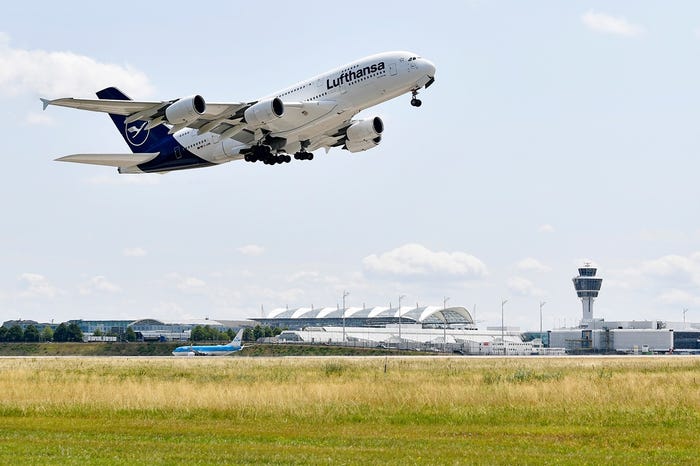Will 5G Buildout Slow or Accelerate in the COVID-19 Era?Will 5G Buildout Slow or Accelerate in the COVID-19 Era?
5G buildout may take a short-term hit given the economic downturn. But could it flourish longer term?
April 15, 2020

Key takeaways:
5g buildout could take a short to medium-term hit because of economic slowdown.
Long term, 5G might accelerate through government funding and use cases that demonstrate the value of high-speed connectivity during COVID-19 and shelter-in-place orders.
5G buildout may exacerbate the digital divide if city and IT leaders don’t focus on equal access in their buildout strategies.
While COVID-19 has ground the economy to a halt in many corners of the U.S., the picture for 5G buildout could flourish long term, with caveats, say industry watchers.
5G may take a hit in the short and medium term given spread of COVID-19 globally and resulting supply chain disruption, 5G hardware delays and general effects of the economic downturn. But in the longer term, the burgeoning needs for home connectivity, digital health and even economic stimulus measures may give 5G buildout a boost.
5G, or fifth-generation wireless connectivity, has promised dramatically faster speeds — up to 100 times faster than 4G connectivity — as well as greater network reliability. Enhanced connectivity will help enable novel connected capabilities, such as driverless cars, drone delivery and augmented reality-enabled gaming.
With stay-at-home orders in place around the world, legions of employees working remotely and distance learning in full swing, high-speed connectivity has become essential infrastructure. It has also strained household networks, which tend to be less robust than corporate ones. That’s a problem when so many workers — and businesses — now rely on home networks for daily tasks.
“The shift from internet as a commoditized consumer service to utility is really under great scrutiny now,” said Jessica Groopman, industry analyst and founding partner at Kaleido Insights. “This is a lifeline for many people now — even more than it was in the past.”
5G connectivity could help improve performance and ease some of the strain on home networks, though.
“COVID-19 has mobilized the telecom industry to focus on bolstering broadband infrastructure capacity and availability to support consumer, work-from-home, government/public safety and enterprise demand,” wrote 451 Research in the report “COVID-19 and 5G: Short-term Pain for Long-term Gain.”
“One of the positive outcomes of COVID-19 could be stronger demand for 5G as a replacement for legacy broadband infrastructure such as DSL. 5G performance is also getting a chance to shine as a result of COVID-19, especially in areas like telehealth, where the long-term impact is expected to be high.”
In the short term, the Federal Communications Commission (FCC) has called on service providers to offer additional bandwidth to households for 60 days to handle the immediate crisis. But in the longer term, the hope is that 5G connectivity could ease the strain on network connectivity.
Short-Term Prospects for 5G Hardware and buildout
Some observers expected 2020 could be a significant year for 5G buildout progress before the emergence of COVID-19 tore through the globe and the economy.
But, for 5G connectivity to take off, additional buildout is necessary, and 5G hardware production — phones, chips, etc. — has to resume. With the supply chain severely disrupted, hardware production suffering collateral damage and consumer demand slumping, delivery of 5G-ready phones and other hardware may slow. Even when 5G-ready phones are available, consumers may view new hardware as a nice-to-have.
“My current thinking is there will be a negative impact on 5G in the short term, but that the longer term is looking even more favorable,” wrote Mark Lowenstein, managing director of Mobile Ecosystem, in a Fierce Wireless column. “Two wildcards are: not knowing how long the economic shutdown will last or how deep the recession will be; and how much the global supply chain will be disrupted.”
In a recent survey conducted by 451 Research, 79% of organizations said that the COVID-19 outbreak has depressed business operations. “Major business disruptions in organizational supply chains, IT resources, human capital, and strategic planning are contributing causes of the reported negative impact,” 451 indicated.
Juniper Research predicts the COVID-19 virus could cause a $42 billion revenue gap for smart device vendors over the next nine months.
Another issue is the delay of spectrum auction. With spectrum auction, a government sells the rights to transmit signals over specific bands of the electromagnetic spectrum and to assign scarce spectrum resources . “COVID-19 and 5G: Short-term Pain for Long-term Gain,” 451 Research noted that this delay of auction will bring a midterm hit for a key enabler of 5G buildout.
“This is the most impactful blow that can be dealt to a country’s ability to roll out 5G services at scale,” the report indicated. “Spain, France and Austria have all made the decision to delay 5G spectrum auctions due to COVID-19. We expect that countries with spectrum delays will impact 5G rollout plans by at least two quarters.”
Promoting Connectivity Long Term
Today, despite the burden of economic uncertainty, carriers and the government are trying to bolster connectivity.
In March, broadband and telephone service providers affirmed that, with the Keep Americans Connected Pledge. More than 700 companies vowed not to terminate service for customers who cannot pay their bills because of hardship given the effects of the virus.
Additionally the FCC has also proposed a fund of $9 billion for buildout in rural areas that would otherwise not experience timely rollout of 5G.
Further, in the $2 trillion stimulus bill passed by the U.S. Congress in March, some $150 billion is allocated to states and local governments to help them weather drop-offs in tax revenue and the costs of fighting the pandemic. A second round of stimulus could provide infrastructure funding, which may also provide additional monies for 5G and additional broadband progress.
Another positive sign is that 5G connectivity is already showing some promise to provide connectivity for critical resources during the pandemic. Services such as telehealth and remote care are burgeoning areas given the threat of viral spread.
In Wuhan, China, for example, Huawei installed a 5G network in a specialist hospital in three days: 5G-enabled robots can assist practitioners in taking care of patients in the hospital and take measurements, reducing the amount of time medical staff need to spend with infectious patients.
Also, in China, 5G has given telehealth service a boost. China Mobile, for example, opened 5G base stations in two emergency field hospitals — Huoshenshan and Leishenshan — and provided live broadcasting of the construction of these two hospitals in real time.
5G Buildout: Perpetuating or Preventing the Digital Divide?
But industry observers note that 5G progress could easily be short-circuited if it deepens the digital divide.
In February, a report noted that a Federal Communications Commission estimate that 21 million Americans lack access to broadband might be more accurate at 42 million without access. That digital divide has long been an important foundation for building out 5G coverage.
Those with experience in providing Wi-Fi access in various metropolitan areas are familiar with this digital divide. “It has to be a holistic view,” said Bill Pugh, managing partner at Smart Connections Consulting. “Are you addressing [connectivity] through a bottom-up approach, and are you starting with the underserved communities?”
Some cities, as they look to future 5G buildout, say that they have a close eye on expanding use of the technology to examine digital inequity in tandem.
Boston CIO David Elges, for example, said that the city doesn’t want 5G access to deepen inequity. Public-private partnerships are vital, he emphasized, to ensure broad access. It’s also key to ensure that “residents are at the center of the conversations,” he said.
Kaleido Insights’ Groopman remains hopeful that COVID-19 has brought the digital divide to the forefront and that as 5G buildout continues, it will remain a factor.
“The ability to drive and govern and make faster decisions ‘at the edge,’ at the local level, so to speak, will become central,” Groopman predicted. “These questions of digital divide, access to health care and ‘How do we push that access and decision-making capability and resources further out to be more agile and to be more resilient in these extreme scenarios?’ will be critical. This [decentralization of governance] is an accelerant for 5G, and there will be a significant focus on keeping cities truly resilient.”
About the Author
You May Also Like






